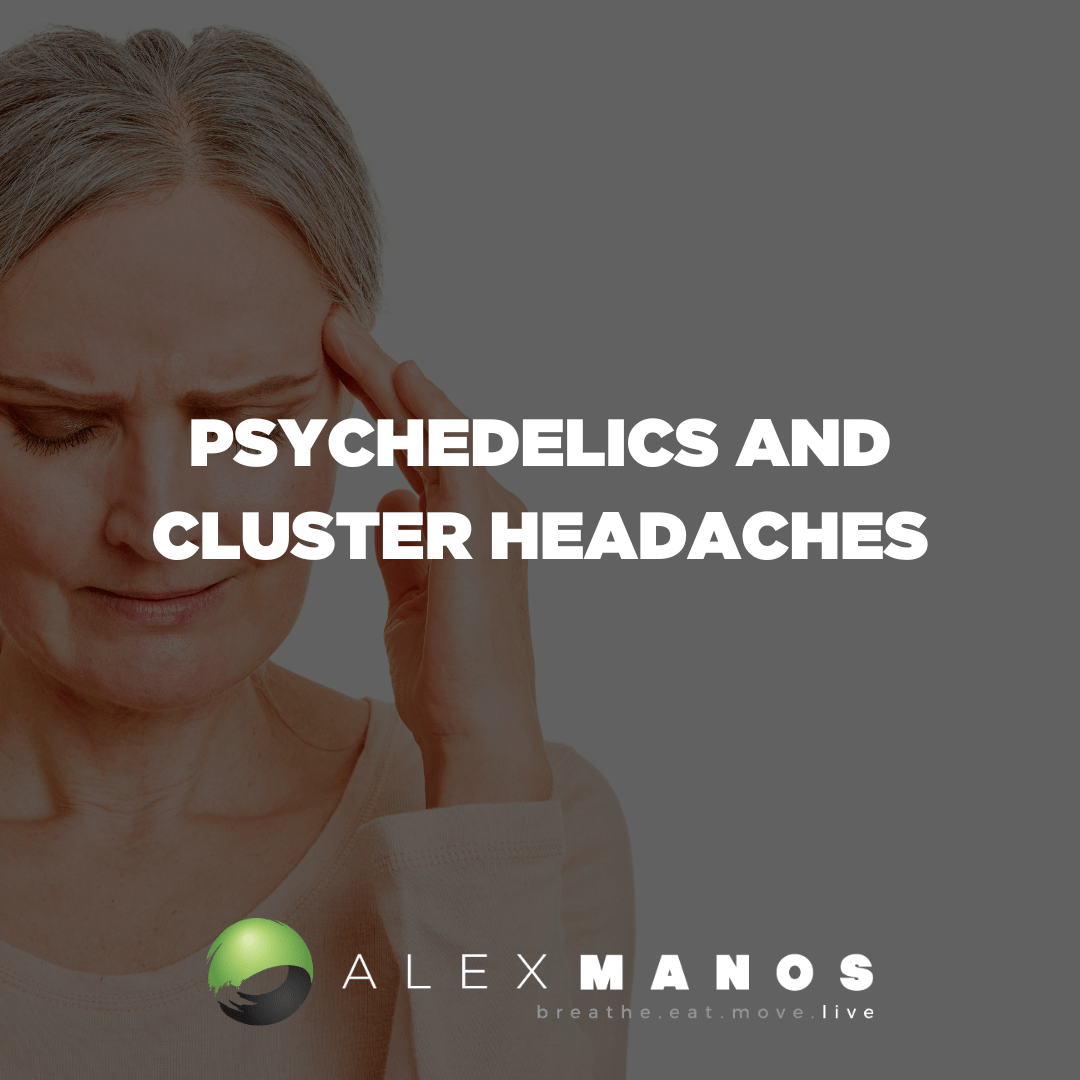Welcome to my blog entitled ‘Psychedelics and Cluster Headaches’.
Before we start, other blogs that you might be interested in, include:
Several studies and reports over the past 50 years have shown potential analgesic benefit in cancer pain, phantom limb pain
and cluster headache (1).
Chronic Pain States: The Mechanisms
The mechanisms by which chronic pain develops are not completely understood but likely involve “a complex interplay between somatic and visceral afferent input, peripheral and central sensitisation, emotional state, and behaviour and cognition.” (1)
In regards to peripheral and central sensitisation, the transition from acute pain to chronic pain, especially in patients with neuropathic pain, has been shown to involve neuroplasticity, or other changes in nervous system structure and function. These neuroplastic changes have been detected at multiple levels of the central nervous system, ranging from the spinal cord to the cortex.
In a healthy brain, communication networks have a “characteristically efficient organisation”, however,
There is growing evidence that disruption of these efficient networks is associated with several neurological conditions including but not limited to depression, anxiety, trauma, addiction, as well as many chronic pain states such as somatoform pain disorder, fibromyalgia, rheumatoid arthritis, centralised pain, chronic pelvic pain, lumbar back pain and phantom limb pain (1).
Psychedelics and Cluster Headaches
Let’s not forget the rest of the above quote however – chronic pain (including cluster headaches) may involve our emotional sate, behaviour and cognition.
Psychosocial stress increases inflammatory cytokines, oxidative stress, inhibits effective digestion and nutrient absorption and contributes to HPA axis dysfunction – all things I would propose may contribute indirectly or directly to chronic pain and cluster headaches.
The psychedelic compounds psilocybin, LSD, MDMA, and ayahuasca are currently being explored for their promising potential to assist in treating trauma-derived illnesses
There is also research discussing the role of adverse childhood events and chronic pain in adolescence and adulthood. Psychedelics also have the ability to support us fully integrate previous traumas and adverse evenst, and this may also provide a route to resolution from chronic pain and cluster headaches.
How Do Psychedelics Help Cluster Headaches?
The primary mechanism of action of psychedelics is via activation of the serotonin 5-HT2A receptor.
There are several mechanisms whereby psychedelic drugs could potentially produce anti-pain effects:
- 5-HT2A receptor activation causes up-regulation of genes associated with neuroplasticity.
- 5-HT2A receptor activation suppresses TNF-α-induced inflammation.
- Psychedelic drugs cause down-regulation of 5-HT2A receptor binding sites and it is thought this is via .
What’s The Evidence For Psychedelics Helping Cluster Headaches?
The literature on classic psychedelics and cluster headaches is limited but does include several indicators that these agents have potential. There are a handful of articles including case reports, case series, retrospective surveys and prospective non-randomised trials of either psilocybin or LSD in chronic
pain conditions.
Let’s look at three studies highlighted in the paper “Chronic pain and psychedelics: a review and proposed mechanism of action” (1) that look specifically at cluster headaches.
In the first study which was a cross-sectional retrospective survey:
Psychedelics were comparable with or more effective than most conventional medications, with increased effectiveness in shortening cluster periods. Subhallucanigenic doses were also efficacious.
In another study the results showed that:
- 85% of psilocybin users noted aborted attacks.
- 52% of psilocybin users and 89% of LSD users reported cluster period termination.
- 95% of psilocybin users and 80% of LSD users reported extension in remission periods.
Finally in another study “pronounced and long-lasting reduction in headache severity and frequency in four of five patients” was seen. In the fifth patient “a 30% reduction in attack severity that persisted for 4 months.”
Conclusion
The transition from acute pain to chronic pain, especially in patients with neuropathic pain, has been shown to involve neuroplasticity or other changes in nervous system structure and function.
Given the accumulating evidence of altered brain functional connectivity in chronic pain states, the ability of psychedelics to disrupt established brain connection patterns is perhaps the most intriguing potential analgesic mechanism for psychedelics (1).
References:
- Castellanos JP, et al. Reg Anesth Pain Med 2020;0:1–9. doi:10.1136/rapm-2020-101273: click here.
- Schindler EAD, Gottschalk CH, Weil MJ, et al. Indoleamine hallucinogens in cluster headache: results of the Clusterbusters medication use survey. J Psychoactive Drugs 2015;47:372–81: click here.
- Sewell RA, Halpern JH, Pope HG. Response of cluster headache to psilocybin and LSD. Neurology 2006;66:1920–2: click here.
- Karst M, Halpern JH, Bernateck M, et al. The non-hallucinogen 2-bromo-lysergic acid diethylamide as preventative treatment for cluster headache: an open, non- randomized case series. Cephalalgia 2010;30:1140–4: click here.
- Psychoactive substances as a last resort—a qualitative study of self-treatment of migraine and cluster headaches: click here.
- Removing the legal barriers to treating the excruciating pain of cluster headaches: click here.
- Beckley Foundation blog post on cluster headaches: click here.
Alex is a certified Functional Medicine Practitioner (IFMCP) and has a MSc in Personalised Nutrition. He is also a breathwork facilitator with a background in personal training and massage therapy. He also runs The Resiliency Program - a 24 week program aimed at building physical, mental, emotional, and spiritual resilience.



